
Henning Larsen sets timber Klaksvík Row Club next to Faroe Islands fjord
Global architecture studio Henning Larsen has designed a rowing club defined by a sloping green roof and timber structure in the Faroe Islands that celebrates the area's sports heritage.
Situated next to Klaksvík's picturesque fjord, the clubhouse by Henning Larsen draws on the region's traditional architecture with the aim of forging a "harmonious dialogue" between the structure and its waterfront setting.
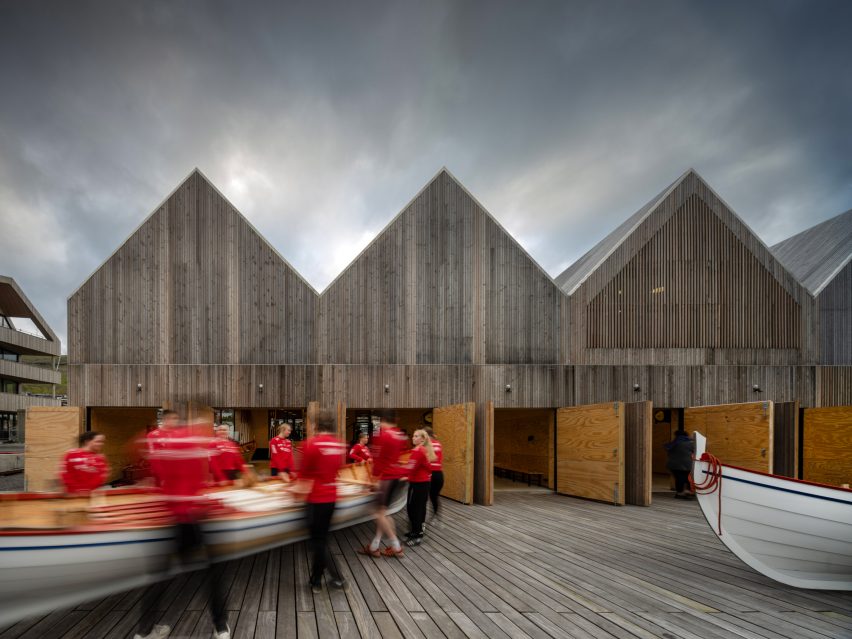
"Our design approach was deeply rooted in the landscape and culture of Klaksvík," studio design director Ósbjørn Jacobsen said.
"The sloping green roof and timber facade pay homage to the surrounding natural beauty, while also nodding to the traditional architecture of the Faroe Islands; a harmonious dialogue between the built environment and the fjord landscape."
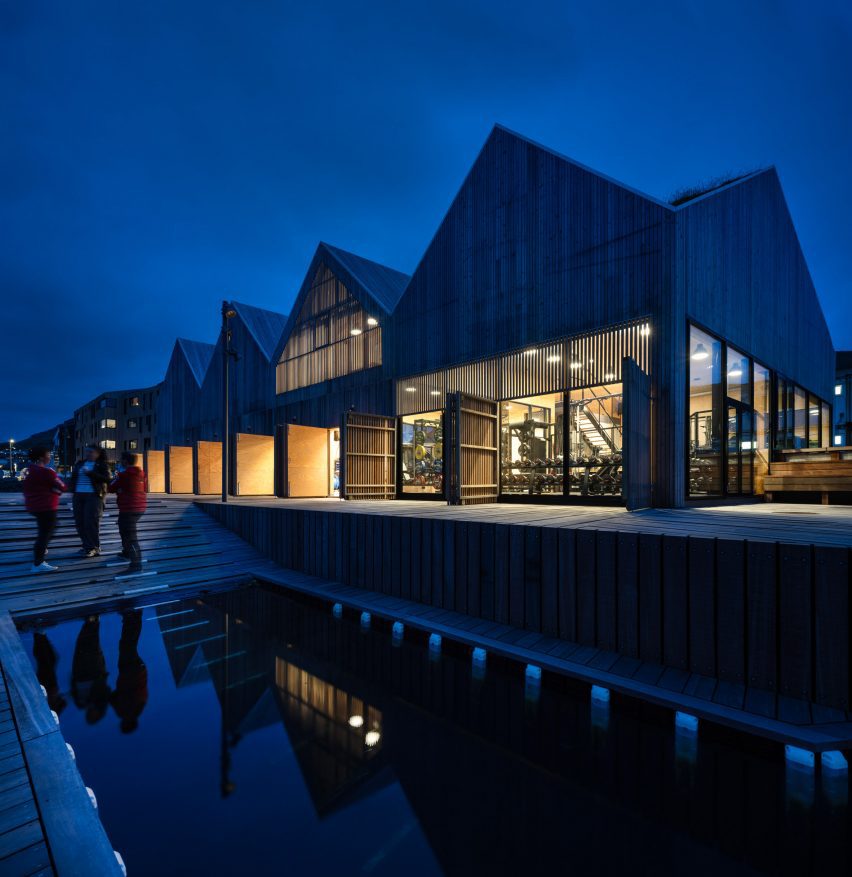
Set within a larger urban development of Klaksvík led by Henning Larsen, The Klaksvík Row Club poses a "vital contribution" to the area's urban development masterplan, which is currently 40 to 60 per cent completed, according to the studio.
The 620-metre-square timber structure, which the studio said was designed in celebration of the Faroese sports heritage, is topped with a serrated roof that transitions to a sloping green roof towards the building's rear.
A wooden dock wraps around the structure's base, providing views out towards the fjord and surrounding landscape.
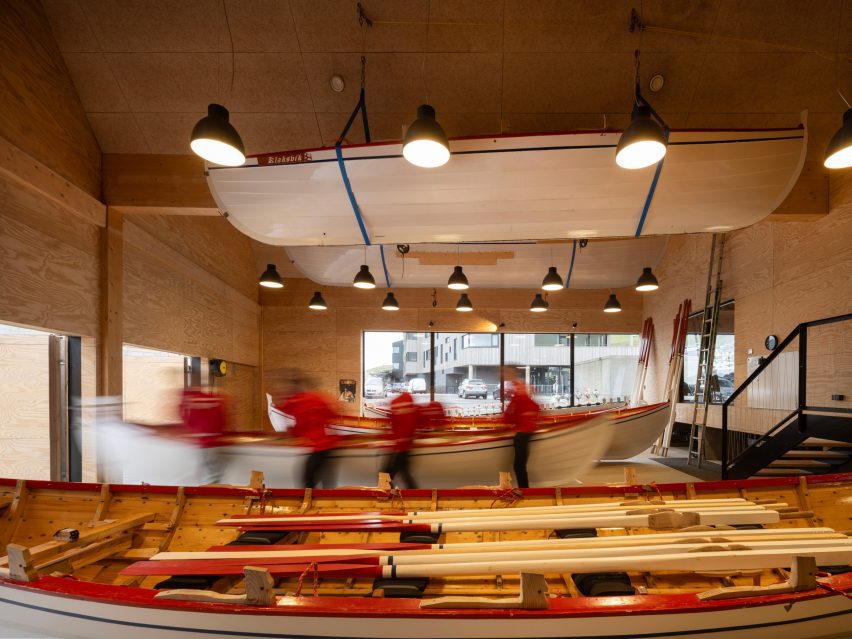
Large timber doors front the building and open up to the dock, which is equipped with a timber slipway to create a direct access route for the row boats.
Slatted timber was used to decorate a set of doors on the ground floor, along with an opening on the upper floor, which emit a warm glow in the evenings.
"We wanted to create a space that is more than simple boat storage," said Jacobsen.
"The expansive doors opening onto the wooden dock and the open timber interior were designed to enhance the community use of the space."
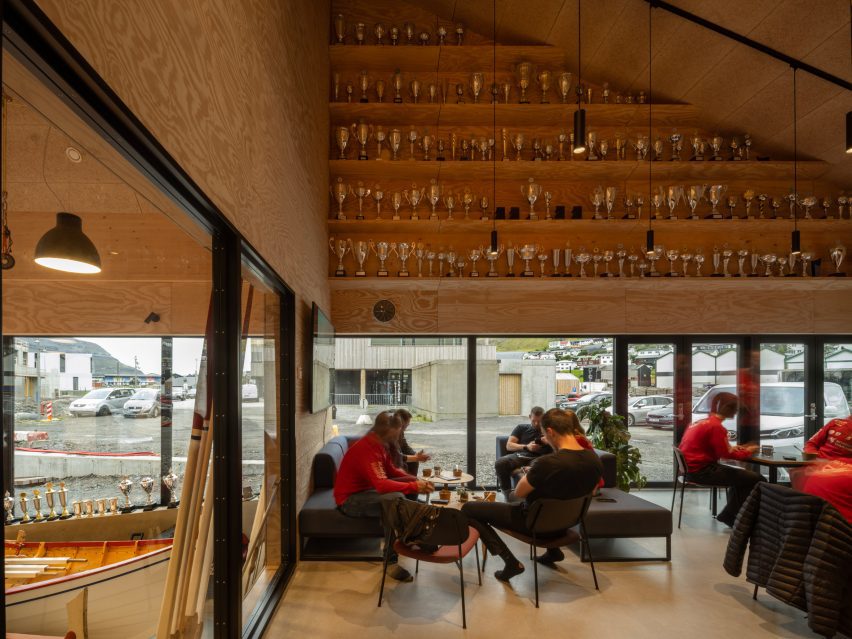
Inside, the structure opens up to a spacious, open-plan boat storage area that showcases the traditional craftsmanship of Faroese boat-making.
Exposed timber beams and panels line the space and are complemented by black steel used for the window frames, light fixtures and structural detailing.
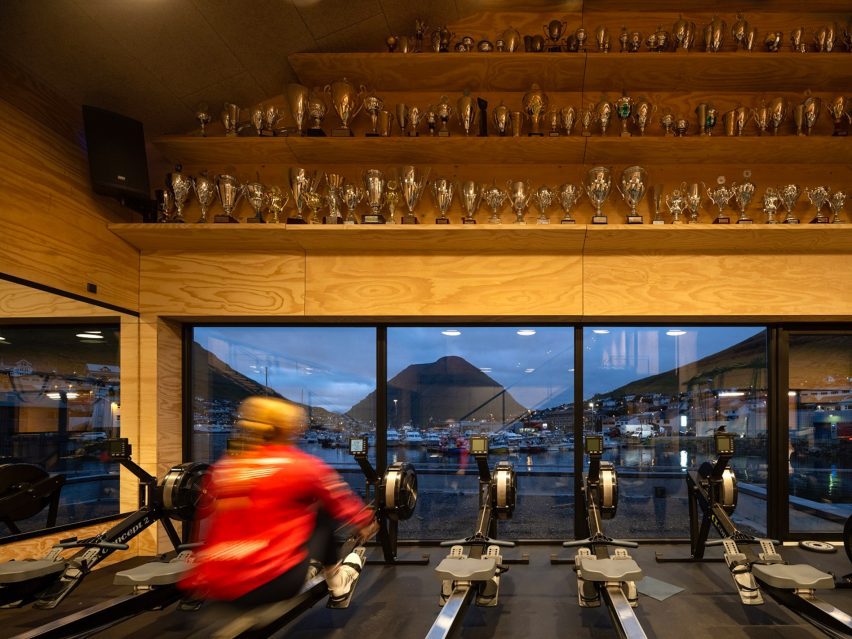
A designated area offers space for training sessions and is fronted by large windows that look out towards the fjord on one side.
Adjacent to this, a cafe provides a communal space for rowers and visitors alike, while a loft area lit by deep skylights provides additional space above.
The studio also embedded wooden shelves into the timber structure to showcase an array of trophies.
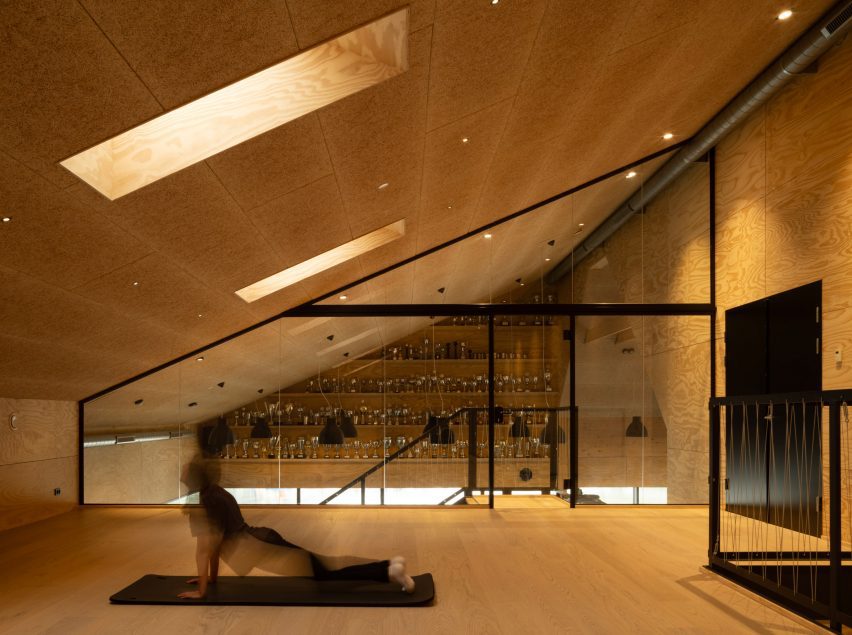
Other projects being completed by the studio as part of the wider Faroe Islands development include a mass-timber university building that references ancient construction methods and a wood-and-concrete ferry terminal that draws on Viking fishing boats.
Elsewhere, recently completed waterfront buildings include a timber and concrete home in coastal Washington and a series of tunnel-like vaults housing cafes and workshops beside the Vltava River in Prague.
The photography is by Nic Lehoux.